#Logger by Joerg Jung
Explore tagged Tumblr posts
Text
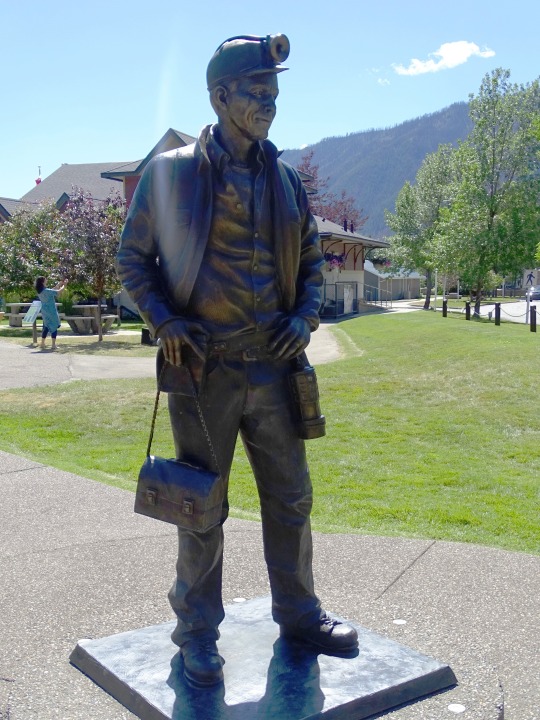















Labor Day
Summer’s final fling has arrived in the form of Labor Day. Yes, most of us get the day off, but this holiday triggers mixed emotions. While summer still has 21 calendar days left, it’s time to get serious. School’s starting and there’s a sense that summer vacation is over. So what’s behind Labor Day — and how did it earn a place as a federal holiday?
Let’s take a look.
When is Labor Day 2024?
Labor Day always falls on the first Monday in September, which means anywhere from September 1 through September 7. This year it's September 2 in the U.S. and Canada. However, this is not the case for most countries — the majority of which celebrate on May 1.
History of Labor Day
Do you get weekends off work? Lunch breaks? Paid vacation? An eight-hour workday? Social security? If you said “yes” to any of these questions, you can thank labor unions and the U.S. labor movement for it. Years of hard-fought battles (and the ensuing legislation they inspired) resulted in many of the most basic benefits we enjoy at our jobs today. On the first Monday in September, we take the day off to celebrate Labor Day and reflect on the American worker’s contributions to our country.
Labor Day History
There’s disagreement over how the holiday began. One version is set in September 1882 with the Knights of Labor, the largest and one of the most important American labor organizations at the time. The Knights in New York City held a public parade featuring various labor organizations on September 5 — with the aid of the fledgling Central Labor Union (CLU) of New York. Subsequently, CLU Secretary Matthew Maguire proposed that a national Labor Day holiday be held on the first Monday of each September to mark this successful public demonstration.
In another version, Labor Day in September was proposed by Peter J. McGuire, a vice president of the American Federation of Labor. In spring 1882, McGuire reportedly proposed a “general holiday for the laboring classes” to the CLU, which would begin with a street parade of organized labor solidarity and end with a picnic fundraiser for local unions. McGuire suggested the first Monday in September as an ideal date for Labor Day because the weather is great at that time of year, and it falls between July 4th and Thanksgiving. Oregon became the first U.S. state to make it an official public holiday. 29 other states had joined by the time the federal government declared it a federal holiday in 1894.
Maguire or McGuire? Read more on this unusual coincidence in our FAQs below.
What is the Haymarket affair?
On May 4, 1886 — at a time when most American laborers worked 18 or even 20 hours a day — tens of thousands of workers protested in cities all across the U.S. to demand an eight-hour workday. Police in Chicago attacked both those peaceful protests and a workers planning meeting two days later, randomly beating and shooting at the planning group and killing six. When outraged Chicagoans attended an initially peaceful protest the next evening in Haymarket Square, police advanced on the crowd again. Someone who was never identified detonated a bomb that killed a police officer, leading cops to open fire on protesters and provoke violence that led to the deaths of about a dozen workers and police.
The Pullman strike
Ironically, Chicago was also the setting for the bloody Pullman strike of 1894, which catalyzed the establishment of an official Labor Day holiday in the U.S. on the first Monday of September.
The strike happened in May in the company town of Pullman, Chicago, a factory location established by luxury railroad car manufacturer the Pullman Company. The inequality of the town was more than apparent. Company owner George Pullman lived in a mansion while most laborers stayed in barracks-style dormitories. When a nationwide depression struck in 1893, Pullman decided to cut costs the way a lot of executives at the time did — by lowering wages by almost 30% while he kept the rent on the dormitories he leased to his workers at pre-depression levels.
Railroad boycott
These conditions ultimately led workers to strike on May 11, 1894. The walkout gained the support of the nationwide American Railroad Union (ARU), which declared that ARU members would no longer work on trains that included Pullman cars. That national boycott would end up bringing the railroads west of Chicago to a standstill and led to 125,000 workers across 29 railroad companies quitting their jobs rather than breaking the boycott.
When the Chicago railroad companies hired strikebreakers as replacements, strikers also took various actions to stop the trains. The General Managers Association, which represented local railroad companies, countered by inducing U.S. Attorney General Richard Olney, a former railroad attorney, to intervene. Indianapolis federal courts granted Olney an injunction against the strike, a move that allowed President Grover Cleveland to send in federal troops to break it up.
A few days later, Cleveland realized that he had to act quickly to appease the country’s increasingly agitated labor movement. But he didn’t want to commemorate the Haymarket incident with a May holiday that would invoke radical worker sentiment. So Cleveland harkened back to the first established September 1882 holiday and signed into law that Labor Day in the U.S. would be celebrated on the first Monday in September.
Labor Day vs. May Day
Communist and socialist factions worldwide eventually chose May 1 as the date to mark the Haymarket affair. A 1904 conference issued a plea that trade unions stage rallies on the first day of May — demanding to make the eight-hour workday standard. They organized the action in the name of “universal peace.” The 1st of May is a national, public holiday in many countries across the world, generally known as “Labour Day,” “International Workers’ Day,” or a similar name – although some countries celebrate a Labor Day on other dates significant to them, such as Canada, which celebrates Labor Day, like the U.S., on the first Monday of September.
Here’s the U.S. Department of Labor’s official tribute to U.S. workers on Labor Day:
“The vital force of labor added materially to the highest standard of living and the greatest production the world has ever known, and has brought us closer to the realization of our traditional ideals of economic and political democracy. It is appropriate, therefore, that the nation pays tribute on Labor Day to the creator of so much of the nation’s strength, freedom, and leadership — the American worker.”
Related Labor Day Content
1) Top Labor Day quotes for your social feeds
Can you guess which president said, “My father taught me to work; he did not teach me to love it”? How about the famous American who uttered “All labor that uplifts humanity has dignity”? We have a list of Labor Day quotes to not only learn about the holiday but to also impress your friends at the barbecue.
2) Fire yourself from your own job
That’s correct. The makers of STōK cold-brew coffees have designed a contest — running through Labor Day — which will give three people $30,000 each in order to take a four-week “STōKbbattical” (from their dreary day jobs) and “make their dreams happen.” It can be anything from rock climbing in Patagonia to setting records for the number of tapas eaten in Spain. No matter what, STōK will help fund it. Unless of course, you’d prefer to spend the next four weeks filling out TPS reports.
3) 8 Labor Day Activities To Enjoy
Whether in the form of a leisurely barbeque, a relaxing swim in the pool, watching a film at a drive-in cinema, or even just relaxing at home with family, there are so many different ways to mark the occasion. We list some activities to try on Labor Day.
Labor Day timeline
1882 It’s Unofficial
10,000 labor workers march through Union Square in New York to protest poor working conditions and low wages.
1884 A Date is Set
The first Monday of September officially becomes Labor Day, with the Central Labor Union pushing other organizations to follow suit and celebrate.
1894 Congress Approves
Labor Day is approved as a national holiday by Congress, and President Grover Cleveland signs it into law.
2009 Let’s Not Forget Women in Labor
President Obama restores the rights of women to sue over pay discrimination with the Lilly Ledbetter Fair Pay Act.
Labor Day Traditions
Much like Memorial Day, which marks the traditional beginning of summer, Labor Day generally signifies that the season has ended — even though the calendar says otherwise. Holiday sales, barbecues, and travel tend to rule the day, while children finally adjust to the harsh reality of the “back-to-school” season. As far as U.S. sports are concerned, Labor Day weekend signals that baseball’s pennant races have entered their final stretch, and tennis fans get an extra day to watch the season’s last Grand Slam event — the U.S. Open in New York City. NFL regular-season games typically begin following Labor Day.
Labor Day by the numbers
162 million – the number of Americans (over 16) in the labor force.
40% – the percentage of U.S. workers who belonged to labor unions in the 1950s (that dropped to 11% by 2018).
1894 – the year Congress officially made Labor Day a federal holiday.
86% – the percentage of Americans planning Labor Day weekend travel who will do so by car.
41% – the percentage of Americans who plan to barbecue over Labor Day Weekend.
818 – the number of U.S. hot dogs eaten every second from Memorial Day to Labor Day.
$685 – the average kid’s back-to-school expenses.
$55,000 – the median U.S. household income.
705 million – the total number of U.S. unused vacation days (2017).
80% – the percentage of Americans who would take time off if their boss were more supportive.
— courtesy WalletHub ©2018
Labor Day FAQs
What does Labor Day really mean?
Americans, as well as workers around the world, celebrate Labor Day by reflecting on all the contributions everyday workers have made to society. Not all countries observe Labor Day on the same date though.
When is Labor Day 2020?
The U.S. observed Labor Day 2020 on Monday, September 2. It’s a federal holiday. Financial markets are closed. There is no mail delivery. Post offices and libraries are closed. Most retail businesses will remain open.
Who invented Labor Day?
It’s more confusing than you might think. The Labor Department explains it this way:
While most sources, including the U.S. Department of Labor, credit Peter McGuire with the origination of Labor Day, recent evidence suggests that the true father of Labor Day may, in fact, be another famous union leader of the 19th century, Matthew Maguire.
Maguire held some political beliefs that were considered fairly radical for the day and also for Samuel Gompers and his American Federation of Labor. Allegedly, Gompers, who co-founded the AFL along with his friend McGuire, did not want Labor Day to become associated with the sort of “radical” politics of Matthew Maguire. So in an 1897 interview, Gompers’ close friend Peter J. McGuire was assigned the credit for the origination of Labor Day.
What's the difference between Labor Day and May Day (May 1)
May 1 (or May Day) is a more radicalized version of Labor Day in many countries. The date recalls Chicago’s Haymarket affair in 1886. American workers, tired of 18-hour days, staged a protest. Police eventually fired on the workers �� killing eight. The following night, May 4, another rally turned violent when someone threw a bomb at police officers. An estimated 11 people died and scores more were injured. Communist and socialist political parties eventually chose May 1 as the date to honor the dead and injured workers.
Labor Day Activities
Read up on the history of Labor Day
Buy an American-made product
Watch a movie about labor unions
Labor Day has a rich history that directly impacts the working conditions we experience today. So in between rounds of BBQ at your Labor Day celebration, take the time to discuss the U.S. labor movement and its contribution to our country's current work culture.
When you're doing your Labor Day shopping, take the time to read the labels. Consider buying products that say "Made in the USA" to show your support for American workers.
Many of us get Labor Day off. What better way to relax than to stretch out on the couch and watch a movie about the American labor movement? There are tons of union-themed movies to choose from. "Norma Rae" ring a bell? Side note: Unions play a major role in the entertainment industry.
5 Labor Day Facts Everyone Should Know!
It’s on May 1 in other countries
Stores remain open
Third most popular holiday for outdoor cookouts
Labor Day marks the unofficial NFL kickoff
Union members today
Most countries around the world celebrate Labor Day on May 1, and it is called International Workers’ Day.
While most schools and offices are closed on Labor Day, retail workers and shopkeepers don’t get the same break, as the holiday is huge for sales and shopping.
Labor Day is right behind the Fourth of July and Memorial Day in being the most popular holiday for barbecues and cookouts.
99.4% of the time, the NFL’s first official game of the season is on the Thursday following Labor Day.
In 2017, there were 14.8 million union members, according to the Bureau of Labor Statistics, while in 1983, there were 17.7 million.
Why We Love Labor Day
We're hard workers — we deserve the day off
It's one last chance to grill
It's the reason we can say TGIF
Statistics show that Americans work longer hours than citizens of most other countries — 137 more hours per year than Japan, 260 more per year than the U.K., and 499 more than France. And our productivity is high — 400% higher than it was in 1950, to be exact. So we totally deserve that day off.
Labor Day is widely considered to be the unofficial last day of summer. Before the air turns cold and the leaves start to fall, it's our last chance to grill some steaks and wear shorts.
Labor Day is a time to celebrate the benefits we enjoy at our jobs — including weekends off. The concept of American workers taking days off dates back to 1791, when a group of carpenters in Philadelphia went on strike to demand a shorter workweek (10-hour days, to be exact). It wasn't until 1836 that workers started demanding eight-hour workdays. So nine to five doesn't sound so bad after all.
Source
#Edmonton#Sparwood#Coal Miner#British Columbia#Terex 33-19 Titan#USA#Canada#Labor Day#First Monday in September#2 September 2024#LaborDay#Logger by Joerg Jung#Prospector and his dog by Chuck Buchanan#Stampeder Statue by Peter Lucchetti#Skagway Centennial Statue by Chuck Buchanan#Standing Together by John Greer#Anonymity of Prevention by Derek Lo and Lana Winkler#Whitehorse#travel#original photography#tourist attraction#landmark#vacation
3 notes
·
View notes
Text
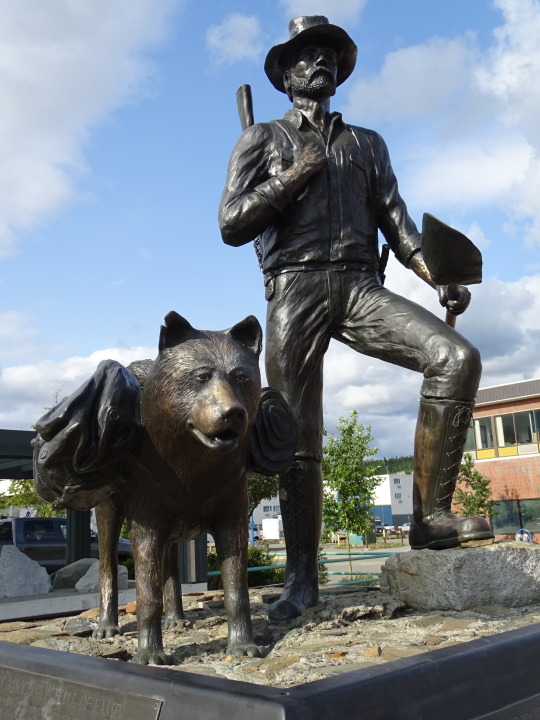

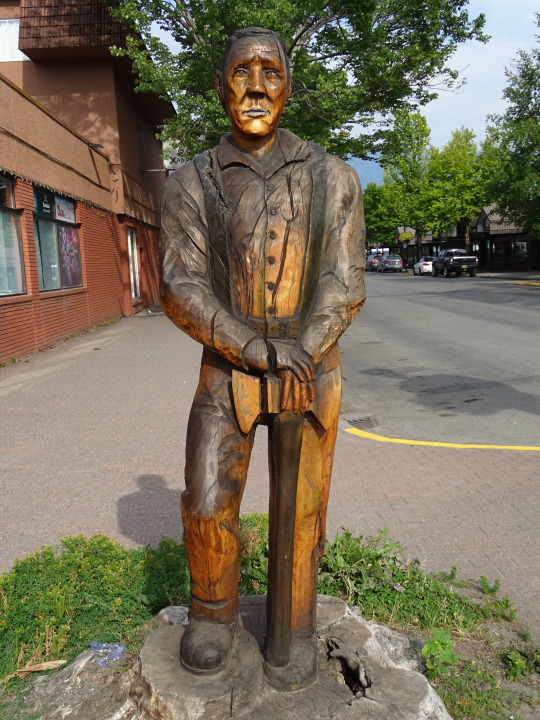
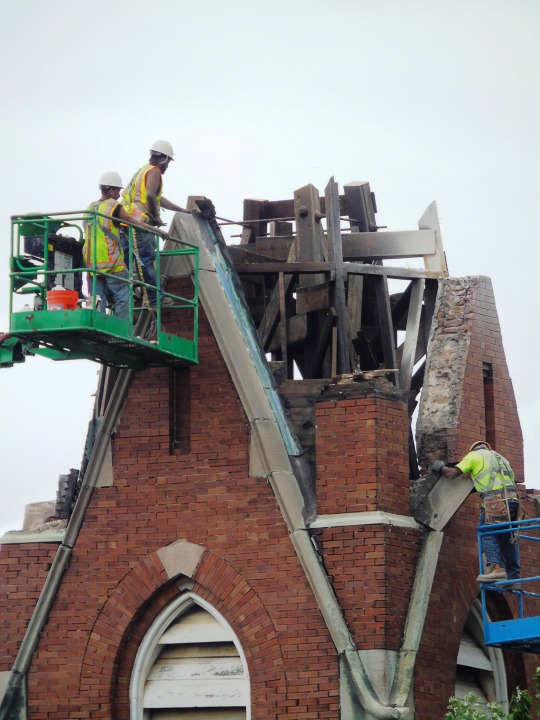
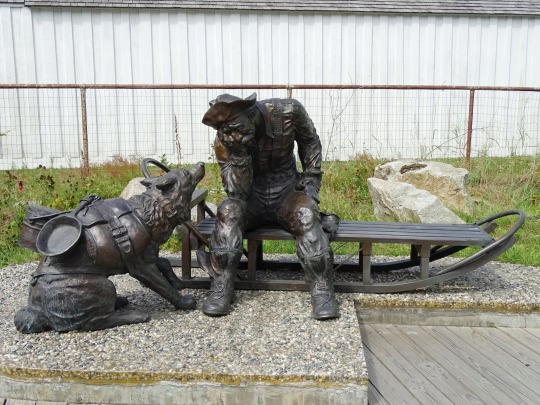
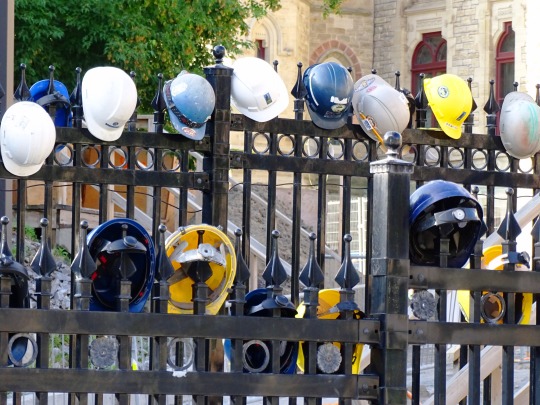



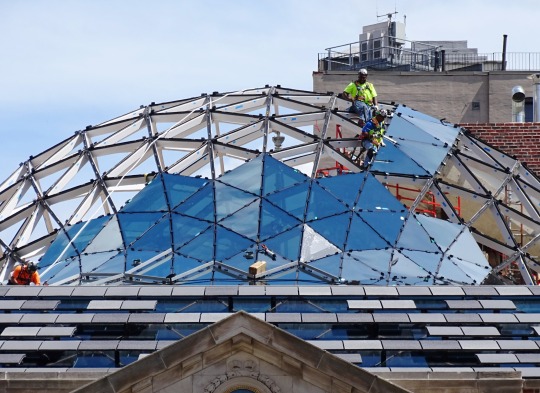


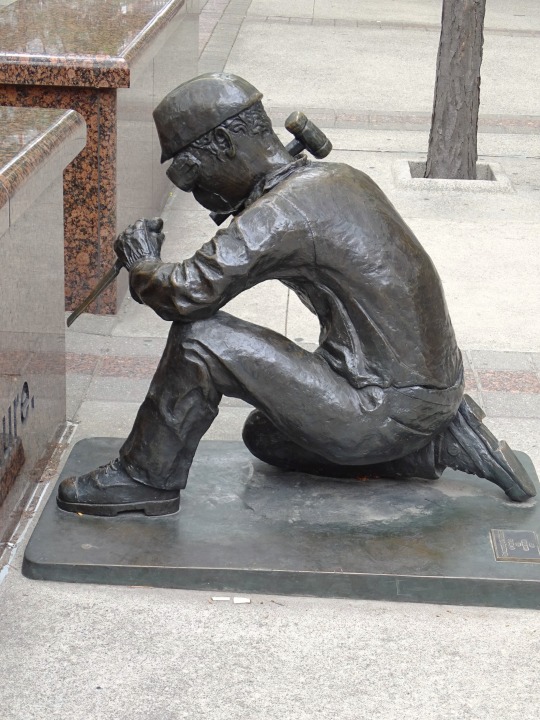
Labor Day
Summer’s final fling has arrived in the form of Labor Day. Yes, most of us get the day off, but this holiday triggers mixed emotions. While summer still has 21 calendar days left, it’s time to get serious. School’s starting and there’s a sense that summer vacation is over. So what’s behind Labor Day — and how did it earn a place as a federal holiday?
Let’s take a look.
When is Labor Day 2023?
Labor Day always falls on the first Monday in September, which means anywhere from September 1 through September 7. This year it's September 4 in the U.S. and Canada. However, this is not the case for most countries — the majority of which celebrate on May 1.
History of Labor Day
Do you get weekends off work? Lunch breaks? Paid vacation? An eight-hour workday? Social security? If you said “yes” to any of these questions, you can thank labor unions and the U.S. labor movement for it. Years of hard-fought battles (and the ensuing legislation they inspired) resulted in many of the most basic benefits we enjoy at our jobs today. On the first Monday in September, we take the day off to celebrate Labor Day and reflect on the American worker’s contributions to our country.
Labor Day History
There’s disagreement over how the holiday began. One version is set in September 1882 with the Knights of Labor, the largest and one of the most important American labor organizations at the time. The Knights in New York City held a public parade featuring various labor organizations on September 5 — with the aid of the fledgling Central Labor Union (CLU) of New York. Subsequently, CLU Secretary Matthew Maguire proposed that a national Labor Day holiday be held on the first Monday of each September to mark this successful public demonstration.
In another version, Labor Day in September was proposed by Peter J. McGuire, a vice president of the American Federation of Labor. In spring 1882, McGuire reportedly proposed a “general holiday for the laboring classes” to the CLU, which would begin with a street parade of organized labor solidarity and end with a picnic fundraiser for local unions. McGuire suggested the first Monday in September as an ideal date for Labor Day because the weather is great at that time of year, and it falls between July 4th and Thanksgiving. Oregon became the first U.S. state to make it an official public holiday. 29 other states had joined by the time the federal government declared it a federal holiday in 1894.
Maguire or McGuire? Read more on this unusual coincidence in our FAQs below.
What is the Haymarket affair?
On May 4, 1886 — at a time when most American laborers worked 18 or even 20 hours a day — tens of thousands of workers protested in cities all across the U.S. to demand an eight-hour workday. Police in Chicago attacked both those peaceful protests and a workers planning meeting two days later, randomly beating and shooting at the planning group and killing six. When outraged Chicagoans attended an initially peaceful protest the next evening in Haymarket Square, police advanced on the crowd again. Someone who was never identified detonated a bomb that killed a police officer, leading cops to open fire on protesters and provoke violence that led to the deaths of about a dozen workers and police.
The Pullman strike
Ironically, Chicago was also the setting for the bloody Pullman strike of 1894, which catalyzed the establishment of an official Labor Day holiday in the U.S. on the first Monday of September.
The strike happened in May in the company town of Pullman, Chicago, a factory location established by luxury railroad car manufacturer the Pullman Company. The inequality of the town was more than apparent. Company owner George Pullman lived in a mansion while most laborers stayed in barracks-style dormitories. When a nationwide depression struck in 1893, Pullman decided to cut costs the way a lot of executives at the time did — by lowering wages by almost 30% while he kept the rent on the dormitories he leased to his workers at pre-depression levels.
Railroad boycott
These conditions ultimately led workers to strike on May 11, 1894. The walkout gained the support of the nationwide American Railroad Union (ARU), which declared that ARU members would no longer work on trains that included Pullman cars. That national boycott would end up bringing the railroads west of Chicago to a standstill and led to 125,000 workers across 29 railroad companies quitting their jobs rather than breaking the boycott.
When the Chicago railroad companies hired strikebreakers as replacements, strikers also took various actions to stop the trains. The General Managers Association, which represented local railroad companies, countered by inducing U.S. Attorney General Richard Olney, a former railroad attorney, to intervene. Indianapolis federal courts granted Olney an injunction against the strike, a move that allowed President Grover Cleveland to send in federal troops to break it up.
A few days later, Cleveland realized that he had to act quickly to appease the country’s increasingly agitated labor movement. But he didn’t want to commemorate the Haymarket incident with a May holiday that would invoke radical worker sentiment. So Cleveland harkened back to the first established September 1882 holiday and signed into law that Labor Day in the U.S. would be celebrated on the first Monday in September.
Labor Day vs. May Day
Communist and socialist factions worldwide eventually chose May 1 as the date to mark the Haymarket affair. A 1904 conference issued a plea that trade unions stage rallies on the first day of May — demanding to make the eight-hour workday standard. They organized the action in the name of “universal peace.” The 1st of May is a national, public holiday in many countries across the world, generally known as “Labour Day,” “International Workers’ Day,” or a similar name – although some countries celebrate a Labor Day on other dates significant to them, such as Canada, which celebrates Labor Day, like the U.S., on the first Monday of September.
Here’s the U.S. Department of Labor’s official tribute to U.S. workers on Labor Day:
“The vital force of labor added materially to the highest standard of living and the greatest production the world has ever known, and has brought us closer to the realization of our traditional ideals of economic and political democracy. It is appropriate, therefore, that the nation pays tribute on Labor Day to the creator of so much of the nation’s strength, freedom, and leadership — the American worker.”
Related Labor Day Content
1) Top Labor Day quotes for your social feeds
Can you guess which president said, “My father taught me to work; he did not teach me to love it”? How about the famous American who uttered “All labor that uplifts humanity has dignity”? We have a list of Labor Day quotes to not only learn about the holiday but to also impress your friends at the barbecue.
2) Fire yourself from your own job
That’s correct. The makers of STōK cold-brew coffees have designed a contest — running through Labor Day — which will give three people $30,000 each in order to take a four-week “STōKbbattical” (from their dreary day jobs) and “make their dreams happen.” It can be anything from rock climbing in Patagonia to setting records for the number of tapas eaten in Spain. No matter what, STōK will help fund it. Unless of course, you’d prefer to spend the next four weeks filling out TPS reports.
3) 8 Labor Day Activities To Enjoy
Whether in the form of a leisurely barbeque, a relaxing swim in the pool, watching a film at a drive-in cinema, or even just relaxing at home with family, there are so many different ways to mark the occasion. We list some activities to try on Labor Day.
Labor Day timeline
1882 It’s Unofficial
10,000 labor workers march through Union Square in New York to protest poor working conditions and low wages.
1884 A Date is Set
The first Monday of September officially becomes Labor Day, with the Central Labor Union pushing other organizations to follow suit and celebrate.
1894 Congress Approves
Labor Day is approved as a national holiday by Congress, and President Grover Cleveland signs it into law.
2009 Let’s Not Forget Women in Labor
President Obama restores the rights of women to sue over pay discrimination with the Lilly Ledbetter Fair Pay Act.
Labor Day Traditions
Much like Memorial Day, which marks the traditional beginning of summer, Labor Day generally signifies that the season has ended — even though the calendar says otherwise. Holiday sales, barbecues, and travel tend to rule the day, while children finally adjust to the harsh reality of the “back-to-school” season. As far as U.S. sports are concerned, Labor Day weekend signals that baseball’s pennant races have entered their final stretch, and tennis fans get an extra day to watch the season’s last Grand Slam event — the U.S. Open in New York City. NFL regular-season games typically begin following Labor Day.
Labor Day by the numbers
162 million – the number of Americans (over 16) in the labor force.
40% – the percentage of U.S. workers who belonged to labor unions in the 1950s (that dropped to 11% by 2018).
1894 – the year Congress officially made Labor Day a federal holiday.
86% – the percentage of Americans planning Labor Day weekend travel who will do so by car.
41% – the percentage of Americans who plan to barbecue over Labor Day Weekend.
818 – the number of U.S. hot dogs eaten every second from Memorial Day to Labor Day.
$685 – the average kid’s back-to-school expenses.
$55,000 – the median U.S. household income.
705 million – the total number of U.S. unused vacation days (2017).
80% – the percentage of Americans who would take time off if their boss were more supportive.
— courtesy WalletHub ©2018
Labor Day FAQs
What does Labor Day really mean?
Americans, as well as workers around the world, celebrate Labor Day by reflecting on all the contributions everyday workers have made to society. Not all countries observe Labor Day on the same date though.
When is Labor Day 2020?
The U.S. observed Labor Day 2020 on Monday, September 2. It’s a federal holiday. Financial markets are closed. There is no mail delivery. Post offices and libraries are closed. Most retail businesses will remain open.
Who invented Labor Day?
It’s more confusing than you might think. The Labor Department explains it this way:
While most sources, including the U.S. Department of Labor, credit Peter McGuire with the origination of Labor Day, recent evidence suggests that the true father of Labor Day may, in fact, be another famous union leader of the 19th century, Matthew Maguire.
Maguire held some political beliefs that were considered fairly radical for the day and also for Samuel Gompers and his American Federation of Labor. Allegedly, Gompers, who co-founded the AFL along with his friend McGuire, did not want Labor Day to become associated with the sort of “radical” politics of Matthew Maguire. So in an 1897 interview, Gompers’ close friend Peter J. McGuire was assigned the credit for the origination of Labor Day.
What's the difference between Labor Day and May Day (May 1)
May 1 (or May Day) is a more radicalized version of Labor Day in many countries. The date recalls Chicago’s Haymarket affair in 1886. American workers, tired of 18-hour days, staged a protest. Police eventually fired on the workers — killing eight. The following night, May 4, another rally turned violent when someone threw a bomb at police officers. An estimated 11 people died and scores more were injured. Communist and socialist political parties eventually chose May 1 as the date to honor the dead and injured workers.
Labor Day Activities
Read up on the history of Labor Day
Buy an American-made product
Watch a movie about labor unions
Labor Day has a rich history that directly impacts the working conditions we experience today. So in between rounds of BBQ at your Labor Day celebration, take the time to discuss the U.S. labor movement and its contribution to our country's current work culture.
When you're doing your Labor Day shopping, take the time to read the labels. Consider buying products that say "Made in the USA" to show your support for American workers.
Many of us get Labor Day off. What better way to relax than to stretch out on the couch and watch a movie about the American labor movement? There are tons of union-themed movies to choose from. "Norma Rae" ring a bell? Side note: Unions play a major role in the entertainment industry.
5 Labor Day Facts Everyone Should Know!
It’s on May 1 in other countries
Stores remain open
Third most popular holiday for outdoor cookouts
Labor Day marks the unofficial NFL kickoff
Union members today
Most countries around the world celebrate Labor Day on May 1, and it is called International Workers’ Day.
While most schools and offices are closed on Labor Day, retail workers and shopkeepers don’t get the same break, as the holiday is huge for sales and shopping.
Labor Day is right behind the Fourth of July and Memorial Day in being the most popular holiday for barbecues and cookouts.
99.4% of the time, the NFL’s first official game of the season is on the Thursday following Labor Day.
In 2017, there were 14.8 million union members, according to the Bureau of Labor Statistics, while in 1983, there were 17.7 million.
Why We Love Labor Day
We're hard workers — we deserve the day off
It's one last chance to grill
It's the reason we can say TGIF
Statistics show that Americans work longer hours than citizens of most other countries — 137 more hours per year than Japan, 260 more per year than the U.K., and 499 more than France. And our productivity is high — 400% higher than it was in 1950, to be exact. So we totally deserve that day off.
Labor Day is widely considered to be the unofficial last day of summer. Before the air turns cold and the leaves start to fall, it's our last chance to grill some steaks and wear shorts.
Labor Day is a time to celebrate the benefits we enjoy at our jobs — including weekends off. The concept of American workers taking days off dates back to 1791, when a group of carpenters in Philadelphia went on strike to demand a shorter workweek (10-hour days, to be exact). It wasn't until 1836 that workers started demanding eight-hour workdays. So nine to five doesn't sound so bad after all.
Source
#Logger by Joerg Jung#Prospector and his dog by Chuck Buchanan#Stampeder Statue by Peter Lucchetti#Skagway Centennial Statue by Chuck Buchanan#Standing Together by John Greer#Anonymity of Prevention by Derek Lo and Lana Winkler#Terrace#Skagway#Ottawa#Chicago#New York City#Toronto#Whitehorse#USA#Canada#Labor Day#First Monday in September#4 September 2023#LaborDay
2 notes
·
View notes
Text

























International Workers’ Day
Appreciate the many ways you and others build our society, and acknowledge your own hard work by treating yourself kindly on National Worker’s Day.
Everybody loves to spend time on their hobbies! It doesn’t matter if it is a love of shopping, diving, going to the movies, traveling, hiking, or one of thousands of other leisure activities. Many people probably spend a large part of their lives figuring out how to do it more often.
Unfortunately, however, the truth is that in order for most people to have the money to do what they love to do in their spare time, it is necessary to be gainfully employed. Of course, there are also some lucky people on the earth who truly love their jobs!. But regardless of how much people enjoy doing their jobs, they simply have to be done.
Of course, it is also important to remember that each and every little job that a person does is necessary and valuable to society, from garbage man to nurse to teacher to policeman, and so many others.
Together, all of humankind builds society, making it a better, safer place with each passing year. Now, isn’t that something worth celebrating? Many people all over the world seem to think it is!
So now is the time to learn about and celebrate International Workers’ Day together!
The History of International Workers’ Day
In the late 19th Century, trade union and labor movements, along with countless industries, grew. This growth from cottage industry and individual laborers through the industrial revolution eventually prompted trade unionists to begin to work toward protecting the rights of the employees. Whether this was child labor laws, limited working hours, or safe working conditions, labor unions fought to take care of the workers.
Sometimes these types of actions might lead to protests, work stoppages, labor strikes or even special days to celebrate the people’s labor. In the United States and Canada, a September holiday called Labor Day, was first proposed in the 1880s. Several years later, in 1887, North America officially established Labor Day.
May 1st, on the other hand, also known as May Day, was chosen for International Workers’ Day to commemorate the Haymarket affair of May 4th 1886. This event took place in Chicago, Illinois, in the US during a workers’ strike when an unidentified person threw a bomb at the police who had gathered for crowd control. The police then responded by opening fire on the workers, killing four of them and injuring many others.
Today, International Workers’ Day is observed on the first day of May on every continent. And now it’s time to celebrate this day literally all over the world!
International Workers’ Day Timeline
1856
Australian stonemasons protest
In Victoria, stonemasons undertake a massive stoppage in a movement toward an eight-hour workday.
1882
Labor Day is proposed for the US
Different workers’ rights advocates propose the idea of an American Labor day. Though many states do adopt the day, it will be another dozen years before it is made a federal holiday (celebrated in September).
1886
The Haymarket Affair takes place
In Chicago, riots break out as workers strike and police get involved, turning to violence and creating panic.
1889
International Workers’ Day is established
With roots in the socialist movement, May 1st is called upon as a protest day for the working-class demands of the eight-hour day.
1919
International Labor Organization begins
Created as part of the Treaty of Versailles, the International Labor Organization (ILO) includes representatives from nine countries.
How to Celebrate International Workers’ Day
This day was always meant to celebrate the work of the everyday man, so for those who may have been feeling a bit underappreciated recently, today might be a good day for you to do what you feel like doing and treat yourself!
Try out some of these other ideas for getting involved and celebrating International Workers’ Day:
Take a Day to Yourself
Take the day off (if it’s not a day off work in that country of residence) and go do something that you want to do for a change. Consider some of these ways to find enjoyment and rest:
Has it been ages since you visited the mountains? Pack a lunch and spend the day enjoying nature and the view from the mountain peak you decide to conquer.
Has your back been causing you increasing discomfort recently? Time to make an appointment with a good masseuse!
And if it’s been forever since you took the time to make yourself a decent meal, today is the perfect day to buy all of the ingredients you need and spend as much time as you want cooking something delicious and nutritious.
No matter what is chosen, this is the day to do something enjoyable and restful!
Attend an International Workers’ Day Event
For those who might be feeling a bit more politically inclined, this day offers an ideal opportunity to attend one of the many rallies or marches that are often organized in many cities worldwide. These rallies and marches are typically organized and dedicated to raising awareness about fair wages and fair working conditions. After all, the first step towards making any kind of change is making people aware of the issue!
Learn About the History of Workers’ Rights
This day is the ideal time to head over to the library and do a little research and read about different situations that have led up to the celebration of International Workers’ Day. For instance, start by researching these pivotal topics:
Victorian Workhouses. Infamous for their exploitation of the weak and the poor, even children fell victim to these houses that were essentially prisons in 18th century England.
Triangle Shirtwaist Factory Fire. In a New York City factory in 1911, the exits and stairwells were kept locked to keep workers from taking unauthorized breaks. When a fire broke out, 123 women and girls and 23 men, mostly immigrants, died.
Sweatshops. Even today, sweat factories exist as crowded workplaces with poor and sometimes illegal conditions, including poor ventilation, low lighting, high/low temperatures, unfair wages, unhealthy or dirty environments, child labor, extended hours without breaks and much more.
Host an International Workers’ Day Gathering
If it is difficult to find an event in the local area, then perhaps it is time to start one. Gather together a few friends, family members, neighbors or coworkers and hold a conversation about fair working. Perhaps it could be a dinner party where the topic of conversation revolves around ways to right the injustices or difficult conditions in certain places.
Or maybe it should be more of an activist gathering where t-shirts are printed and picket signs are made in support of fairness in employment. Go with what works for each individual and the community!
International Workers’ Day FAQs
When is International Workers’ Day?
International Workers’ Day takes place each year on the first day of May, also known as May Day.
What is International Workers’ Day?
This day is promoted by the international labor movement to celebrate laborers and those in the working class.
Where is International Workers’ Day celebrated?
International Workers’ Day is celebrated in many countries all over the world, often on May 1 but sometimes on another day.
How to celebrate International Workers’ Day?
International Workers’ Day can be celebrated in a variety of ways, whether listening to speeches, participating in marches, and showing support for workers’ rights.
Why do we celebrate International Workers’ Day?
This day is celebrated to commemorate the historic struggles made by the labor movement, and to focus on continuing to promote equal and fair rights for workers.
Source
#Logger by Joerg Jung#Prospector and his dog by Chuck Buchanan#Stampeder Statue by Peter Lucchetti#Skagway Centennial Statue by Chuck Buchanan#Standing Together by John Greer#Anonymity of Prevention by Derek Lo and Lana Winkler#Terrace#Skagway#Ottawa#Chicago#New York City#Toronto#Whitehorse#USA#Canada#travel#original photography#1 May#vacation#tourist attraction#cityscape#architecture#International Workers’ Day#InternationalWorkersDay
0 notes
Text

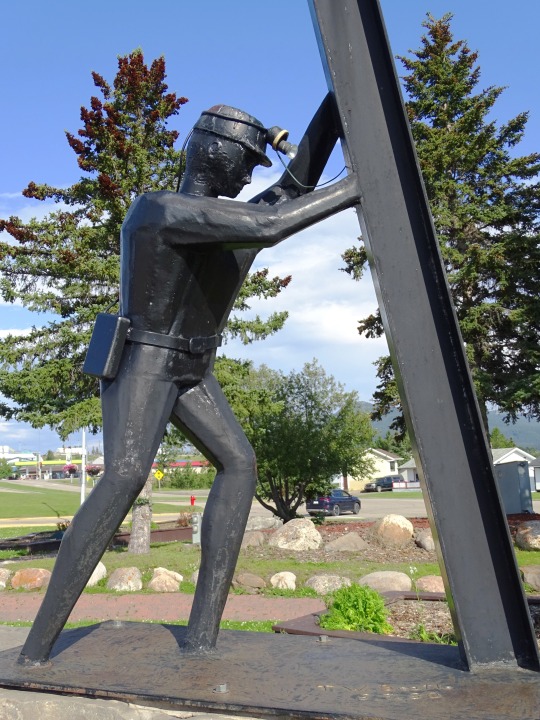


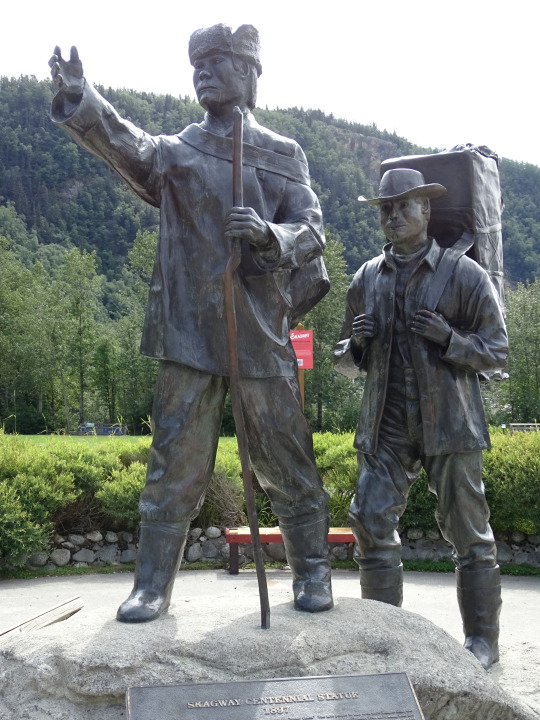


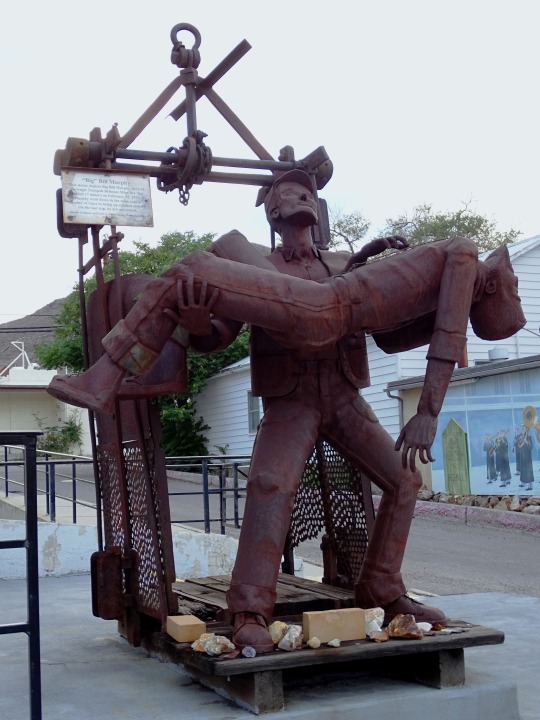

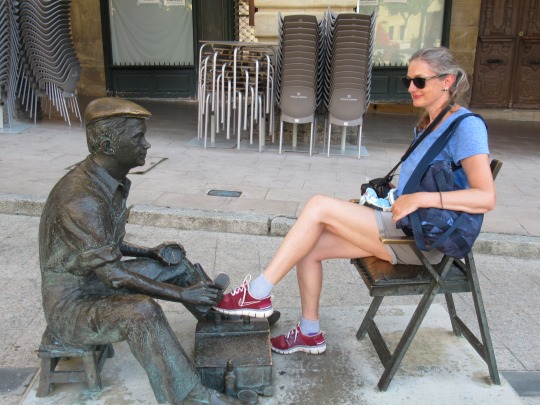
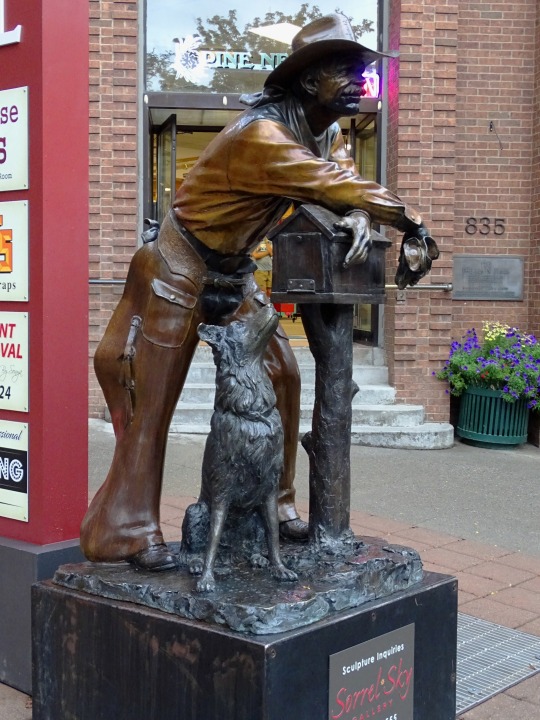
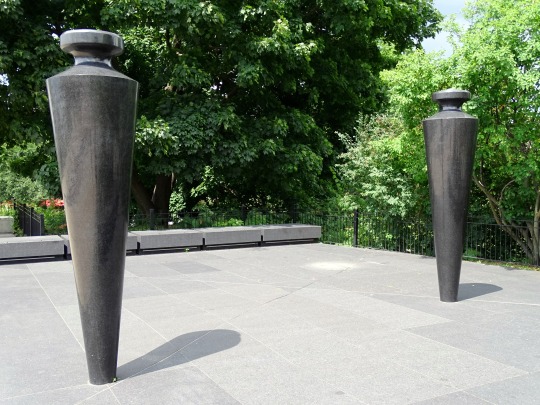
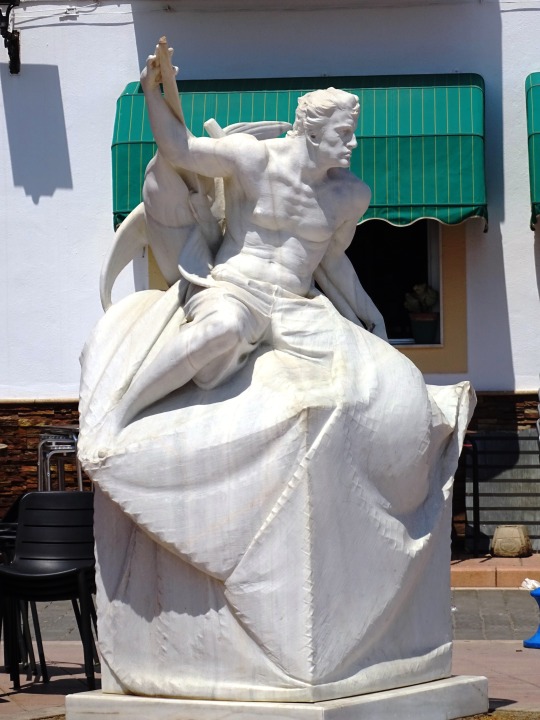




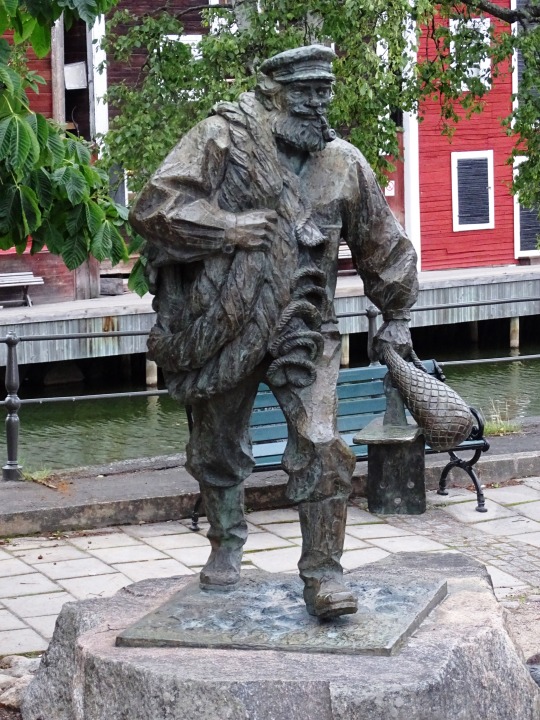

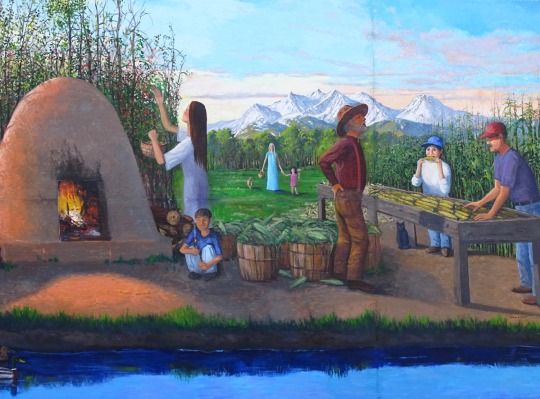
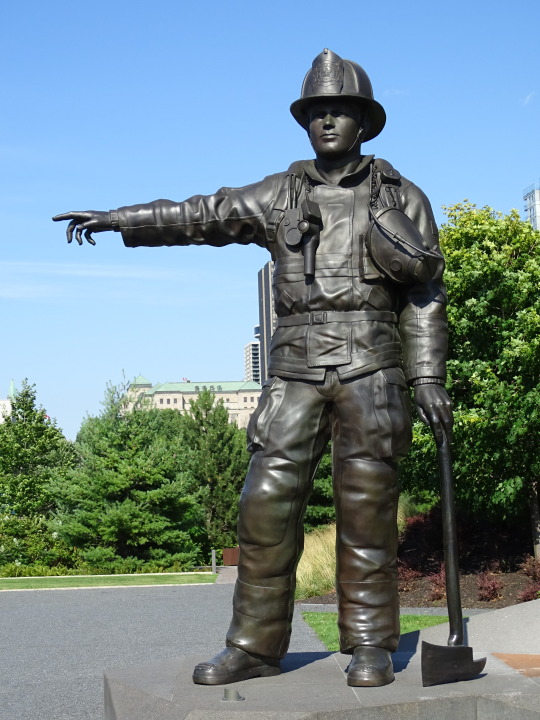



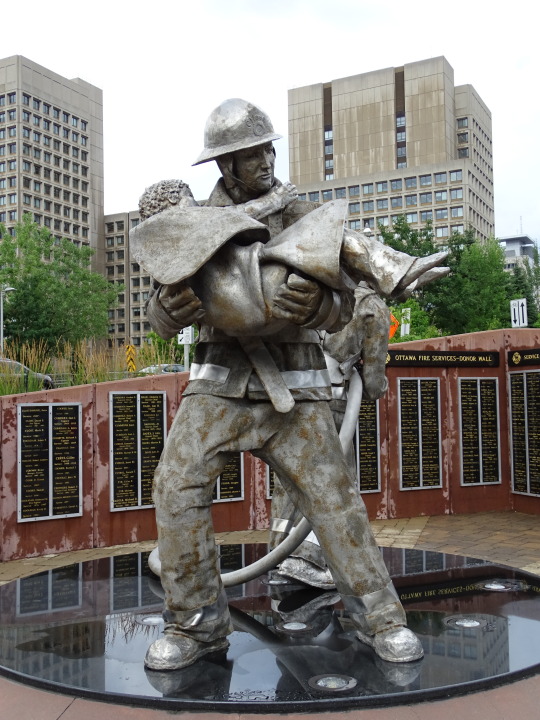

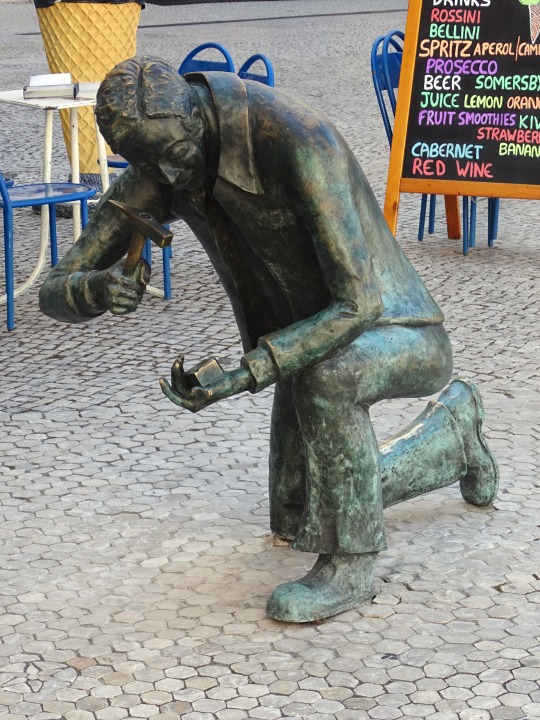
International Workers Memorial Day
Workers’ Memorial Day is an international holiday marked on April 28 annually. It is observed to raise awareness of the importance of workplace safety, as well as commemorate all the workers who have lost their lives due to work-related illnesses and those whose lives have been put on hold due to injuries that have incurred while working. According to figures, the number of people who get killed at work is higher than those who lose their lives to wars and drug abuse combined! Labor unions around the world observe this day to remember their fallen heroes and discuss measures to ensure safe workplaces.
History of Workers Memorial Day
Although it only became widely popular when the U.S. first celebrated it on April 28, 1989, Workers’ Memorial Day had been celebrated several years before then by Canada on the same day. Perhaps, the unpopularity associated with Canada’s first observation can be credited to the fact that it was celebrated under a different, albeit similar name. Regardless of who first observed it though, the day was inspired by the signing of the Occupational Safety and Health Act into law in 1970 and the formation of the OSHA on April 28, 1971.
In the early years of the signing of the OSHA into law, the celebration of the Workers’ Memorial Day was centered in North America. The holiday only attained international recognition in the last parts of the 20th and the beginning of the 21st centuries. In 1985, the Canadian Labor Congress pronounced April 28 as an annual day of remembrance — which is the anniversary of a Workers’ Compensation Act signed as far back as 1914. Progressively, the American Federation of Labor and Congress of Industrial Organization (A.F.L.-C.I.O.) declared April 28 as Workers’ Memorial Day to honor the thousands of people who have been injured or lost their lives on their jobs. The U.K. followed suit with their celebration in 1992.
Since the adoption of the holiday by the International Labor Organization (I.L.O.) in 2001, many countries are now actively participating in observing it, with some deeming it fit to confer the holiday a public holiday status. Furthermore, to add value to the holiday, from 1996, annual themes began to be assigned to each year’s celebration of the day.
Workers Memorial Day timeline
1971 OSHA is Formed
The Occupational Safety and Health Administration (OSHA) is formed.
1989 A.F.L.-C.I.O. Declaration
The American Federation of Labor and Congress of Industrial Organizations declares April 28 as Workers' Memorial Day.
1992 Introduced in the U.K.
Tommy Harte introduces Workers' Memorial Day in the U.K.
1996 Themes Begin to Be Set
The I.C.F.T.U. begins to set annual themes for each Workers' Memorial Day.
2001 New Declaration
An agency of the United Nations — I.L.O. — recognizes Workers' Memorial Day and declares it World Day for Safety and Health at Work.
Workers Memorial Day FAQs
What does a labor union do?
Among many other things, labor unions are charged with fighting for the betterment of their workers’ welfare, remunerations, and all things needed for them to work in a favorable environment and for decent financial gratification. Generally, labor unions serve as mediators between their members and authorities. Their impacts have been felt by both employees and employers over the years.
Is a labor union a good thing?
It is. This is evident in the many advantages and privileges unionized workers get over their non-unionized counterparts. Most significant changes in employees’ welfare and safety were achieved through the struggles of labor unions. They do have their setbacks though.
Why do people not like unions?
Most governments and employers detest labor unions because of their strong affection for riots and strike actions. To the unions, those two are the most effective languages employers understand, and many a time, they do succeed in pressing home their demands with the employers.
How to Observe Workers Memorial Day
Inform the public about work safety
Strive for a safer environment at work
Honor the memories of fallen workers
Go out there and educate the public on the importance of staying safe while at work. Also, tell them the possible risks associated with their various works.
If you are working in an unsafe or potentially dangerous environment, get people to rally behind you and ask for a safer work environment from your employers. You might just be a cause for a good change.
Be it a close relative, friend, acquaintance, or stranger, honor the memories of those fallen heroes, who died in the cause of their works. Pay tributes to them or their loved ones.
5 Interesting Facts About Workers’ Memorial Day
It was first celebrated in Canada
It was unpopular at first
America made it popular
It became international
It's a public holiday in Gibraltar
Canada was the first country to mark it although under a different but similar name.
The event was first known but not quite as popular as it became in the later years.
It only began to be widely recognized when the U.S. marked it.
A host of country trade unions in Europe, Asia, Africa, Australia, and elsewhere observe it.
While it is simply a national holiday in other countries, it is a government-free public holiday in Gibraltar.
Why Workers Memorial Day is Important
It reminds us of successful struggles
It increases the unity between workers worldwide
It gives workers a more amplified voice
Workers' Memorial Day reminds us of how effective calling out to authorities for good changes can be. By doing so, we may be able to save someone's life.
Whichever continent you happen to be from and whichever race you belong to, this day increases the bond and unity between workers in achieving a common goal. We love this!
Workers around the world use the day to loudly voice out their work environment and other pressing demands. Considerate employers, on the other hand, listen to the demands.
Source
#Firefighter by Susan Velder#Miners Memorial by T.W. Seatle#Prospector and his dog by Chuck Buchanan#The Logger by Joerg Jung#Skagway Centennial Statue by Chuck Buchanan#Stampeder Statue by Peter Lucchetti#28 April#USA#Canada#International Workers Memorial Day#WorkersMemorialDay#original photography#travel#vacation#cityscape#tourist attraction#Whitehorse#Skagway#Chicos and Capulin by David Montgomery#Bad Decision by Vic Payne#Big Bill Murphy by Adam Skiles#Waiting on an Answer by George Lundeen#Anonymity of Prevention by Derek Lo and Lana Winkler#Standing Together by John Greer#Monument to the Calceteiro by Sérgio Stichini#Gruvabetaren by Helge Zandén#Strömmingsfiskaren by Per Nilsson-Öst
0 notes
Text











Terrace, BC
Terrace is a city located near the Skeena River in British Columbia, Canada. The community is the regional retail and service hub for the northwestern portion of British Columbia. With a current population of over 12,000 within municipal boundaries, the city services surrounding communities as well bringing the Greater Terrace Area population to over 18,000 residents.
Terrace was originally called Littleton, but this name was rejected by postal authorities because of possible confusion with Lyttleton, a town in New Brunswick. The new name is descriptive of the manner in which the land rises from the river.
As northwest British Columbia's main services and transportation hub, Terrace is intersected by the Canadian National Railway as well as Highway 16 (running west) and then east to Thornhill to Highway 37 South. Air services are provided at Northwest Regional Airport, with connections to Prince George, Smithers and Vancouver. The Terrace railway station is served by Via Rail's Jasper – Prince Rupert train. Health care in Terrace is administered by Northern Health and provided in part by Mills Memorial Hospital. In 2021, a 33,100 m2 (356,000 sq ft), new hospital project, nearly double the size of the current hospital was announced.
Source: Wikipedia
#Mexican Steak Taco#Chicken Enchilada#Spirit Bear Mother#Wings of Hope by Joerg Jung#The Logger by Joerg Jung#Max Gam Ol by Clint Adams#Wings of Hope by Amanda Hugon#Terrace#British Columbia#BC#travel#original photography#vacation#tourist attraction#landmark#river bank#summer 2023#nature#woods#Canada#cityscape#architecture#public art#food#small town#downtown
1 note
·
View note